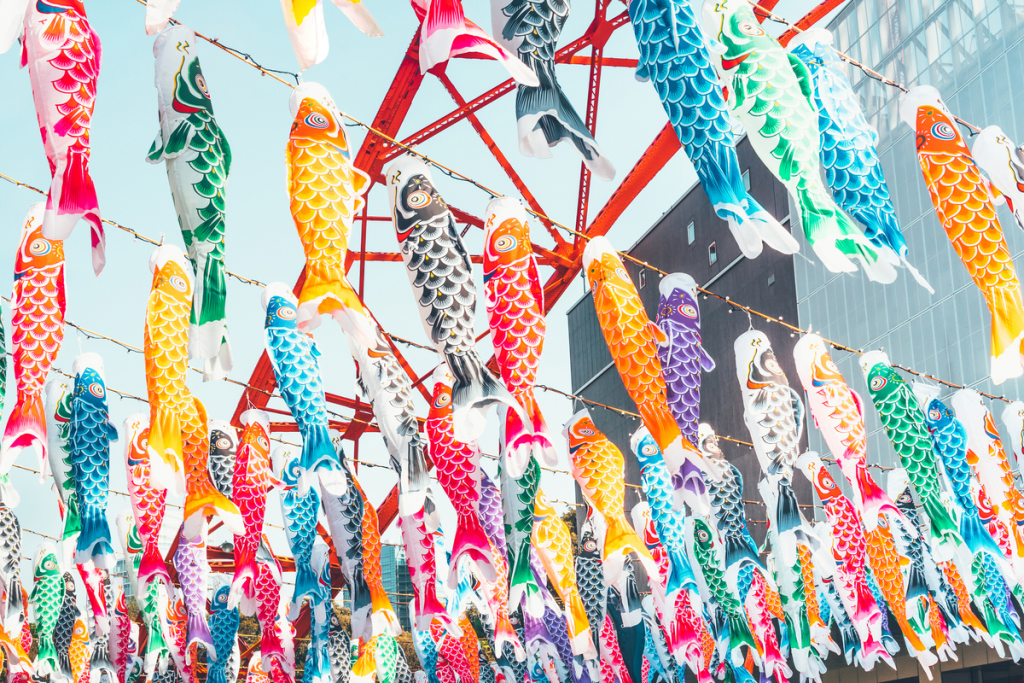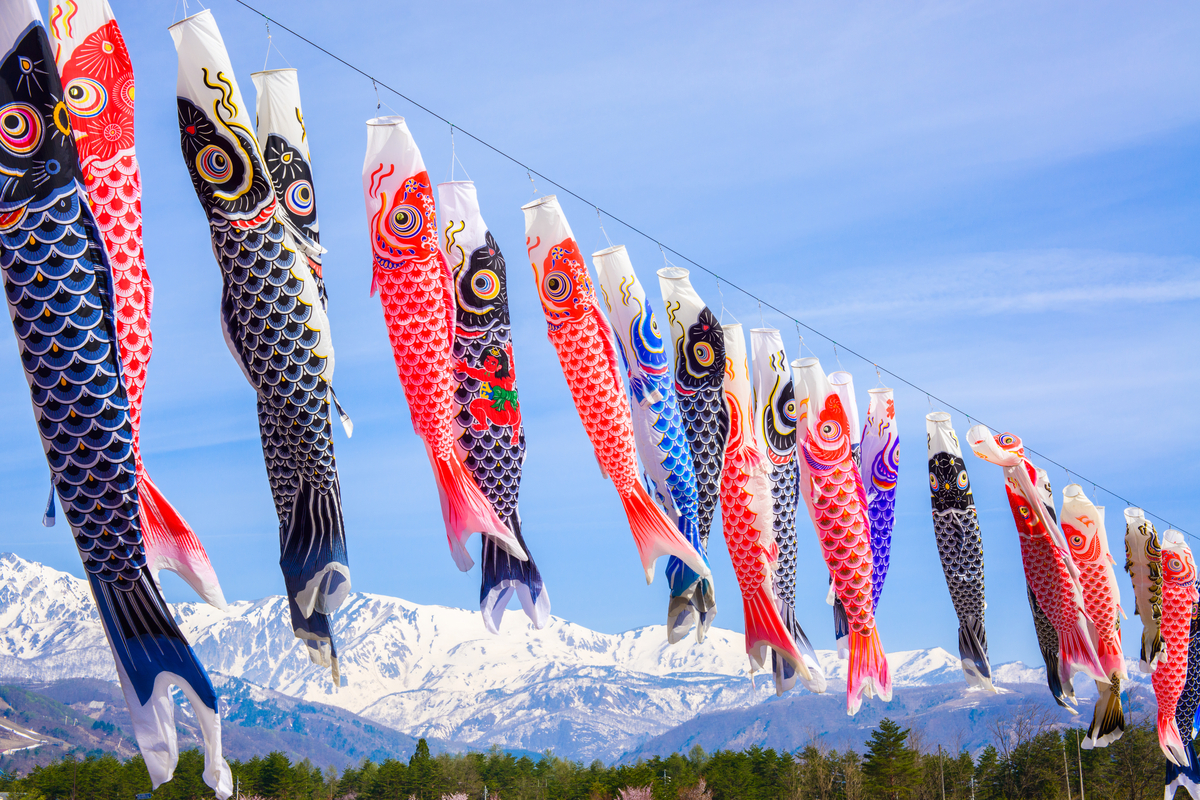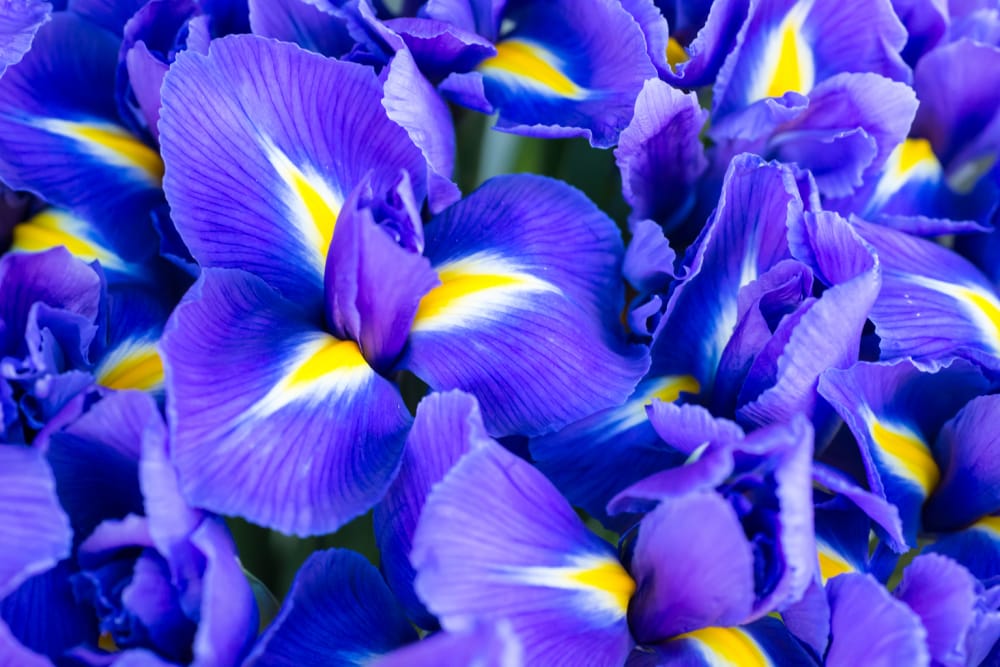Children’s Day, celebrated on May 5th during Japan’s Golden Week holiday every year, has a much longer history than most expect. While most people are familiar with the fact that the holiday used to be known as Boys’ Day and honored male offspring only, the tradition goes much deeper. To celebrate all children on this special day, we’re taking you on a journey into the holiday’s origins and the history of how it evolved into the Children’s Day we know today.
Tango no Sekku: The Origins of Children’s Day
To understand Children’s Day better, we’re going to have to go back to the Nara and Heian periods, when Japan’s culture was heavily influenced by Chinese customs. Among the many Chinese inventions that sailed across the Japan Sea along with kanji and green tea, so did the tradition of Gosekku, which became a selection of five seasonal festivals. In China, these days were unlucky days, but the Nara and Heian courts that adopted the custom put a spin on it by making food offerings and poetry readings to counteract the negative vibes with a positive celebration.
Many of these festivals are still celebrated, but like Children’s Day, are known under different names. Jinjitsu no Sekku, on January 1 (although now Jinjitsu no Sekku has moved to January 7), is known as Oshogatsu, Momo no Sekku on March 3 as Hina Matsuri, Tango no Sekku on May 5 as Children’s Day, Shichiseki no Sekku on July 7 as Tanabata and Choyo no Sekku on September 9 is commonly referred to as Kiku Matsuri.
“Carp streamers symbolize parents’ wishes for their children to grow up healthy and strong.”
Tango no Sekku — also referred to as Ayame no Hi or Shobu no Sekku (Iris Day) to further complicate things — was combined in many regions with an ancient rice planting tradition. May, back then, was closely associated with rice planting season. The first rice planting of the year was a strictly religious affair. Young, unmarried women would stay the night in huts thatched with irises and mugwort and drink medicinal liquor to purify themselves physically and spiritually before their important task. The success of the year’s rice harvest depended on their work and was a matter of life and death.
So when did it become Boys’ Day?
Most of Japan’s modern-day Children’s Day traditions can be traced to the Kamakura and the following Edo periods when samurai class took over. Linking the word “shobu” (victory/battle/contest) to its homonym shobu (iris) and the shape of the flower’s leaves to the image of a sword, the warriors turned the previously women-only event into a men’s only domain. It became a critical seasonal event to celebrate boys’ growth and success by organizing yabusame (horseback archery) shows and other manly pursuits. It was also during these eras when people began to decorate with samurai helmets (or pictures of them) and carp streamers — both to counteract any calamity that may occur on the ever-unlucky May 5th.
And Finally Back to Children’s Day
Once the Meiji Period began, the government did away with both Tango no Sekku and a whole slew of other holidays, though many regions maintained some of the traditional festivities associated with the events, so they never completely died out. This made it easier to bring them back in post-war Japan, when the government reintroduced Boys’ Day in 1948 — this time rebranded as Children’s Day, to celebrate all children.
Children’s Day symbols and their meanings
As May approaches, the following decorations and traditional meals can be observed and bought throughout Japan. Families celebrating Children’s Day would typically decorate most of these traditional ornaments at their homes and have special meals to celebrate their children’s growth and health.
Carp-shaped Streamers
https://www.instagram.com/p/B_zWwJeHLfn/
This tradition came from China, as carp that fight to go upstream the Yellow River and succeed in reaching the Dragon’s Gate will be reincarnated as dragons. It symbolizes parents’ wishes for their children to grow up healthy and strong. Each carp represents a person. Traditionally, the largest, black carp symbolizes the father and each of the following (in order of red, blue, green and either orange or purple) for each son in the family. These days, the tradition has adjusted — the father remains as the black carp, but the mother has taken over the red/pink carp, while children (both sons and daughters) take on the remaining fish in consecutive birth order.
Kintaro Dolls
https://www.instagram.com/p/B_zNaisl20j/
Kintaro, who grew up to become Sakata no Kintoki, was a child with superhuman strength, according to Japanese folklore. The kid rode a bear and was conceived when a god impregnated his mother with a giant clap of thunder. He symbolizes the hope parents have for their children to grow brave and strong. And metal, perhaps. People also decorate with dolls representing Benkei and Momotaro, two other badass folklore legends.
Kabuto Helmets
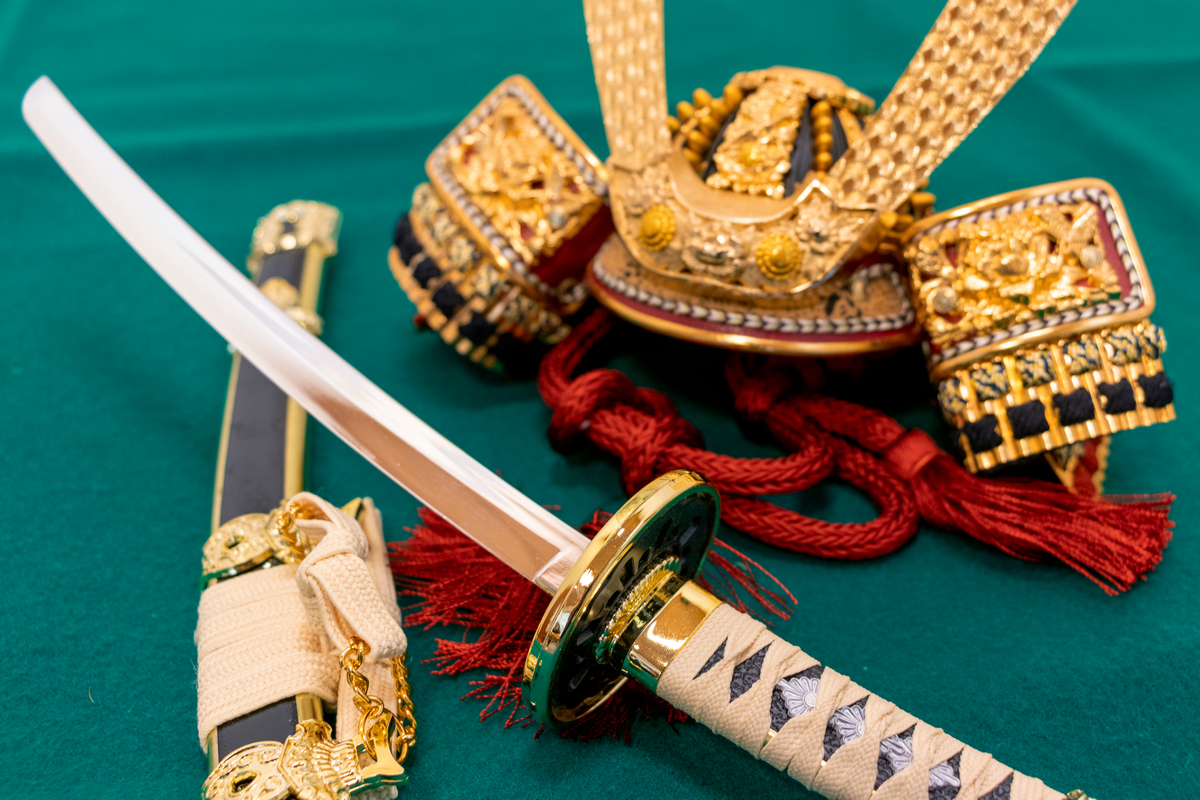
Decorating with samurai armor and helmets is said to hail from the Edo Period and has remained strong to this day. They guard against calamity and misfortune and represent strength and bravery. Much like the hina dolls of the Hina Matsuri, these displays can be quite simple or be quite elaborate, with multiple layers of accessories.
Irises (shobu)
Irises have long been known as medicinal plants in Japan and bathwater with iris essential oil or leaves is said to improve blood circulation as well as relieve back pain. It’s also good for dispelling misfortune and miscellaneous illnesses.
Chimaki
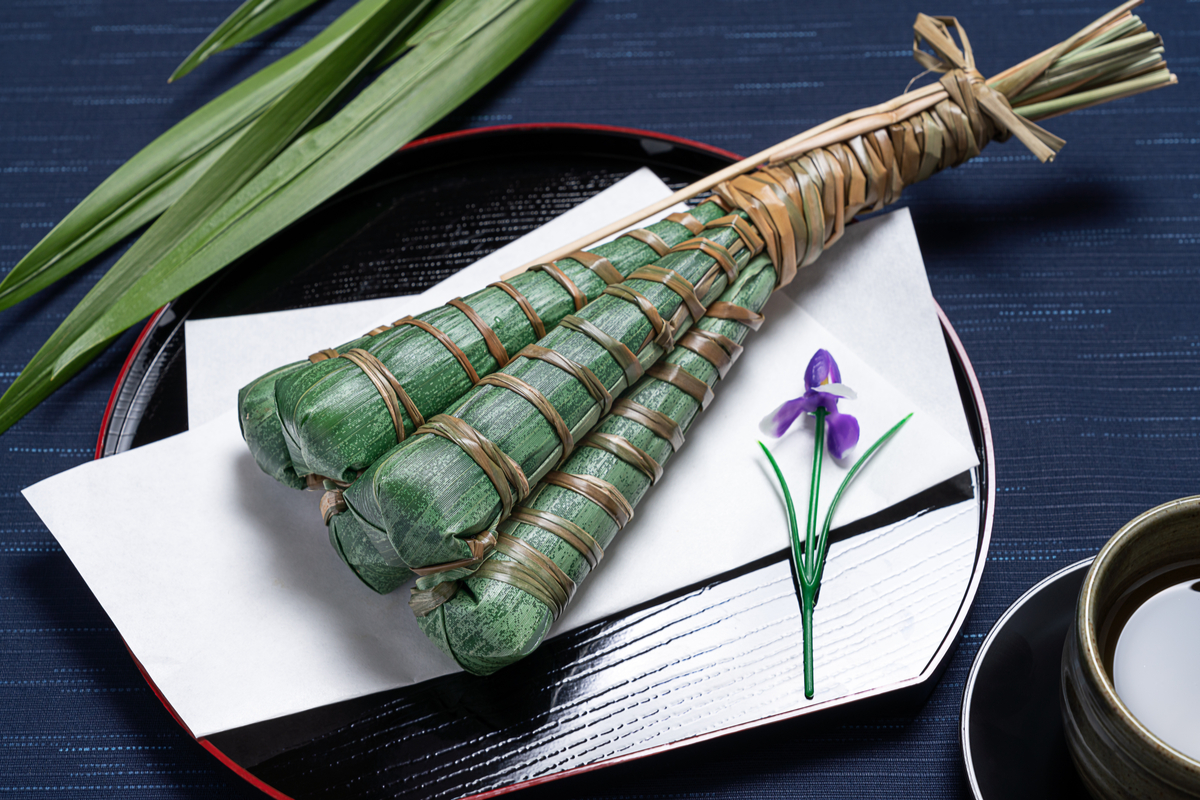
Originating in China, these steamed glutinous rice dumplings are wrapped in bamboo, banana or reed leaves. It was a popular on-the-go meal for soldiers during the Warring States period, and these days it’s seen more in Kansai than in the Kanto region.
Kashiwa Mochi
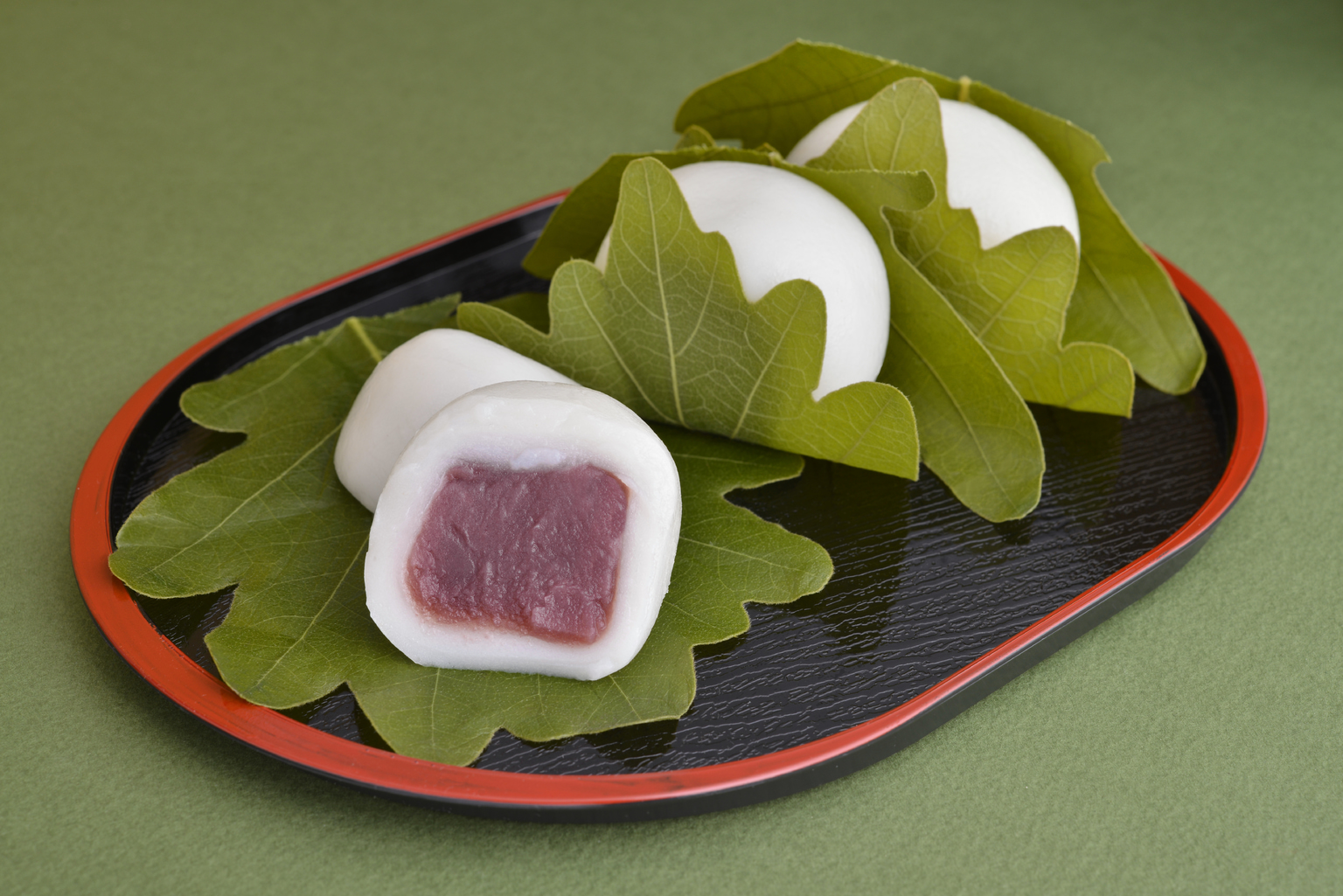
A Japanese incarnation of chimaki hailing from the Edo Period, these rice cakes are wrapped in oak leaves. The leaves represent the continued succession of a family, as oak leaves do not drop their old leaves until young buds appear. They are often filled with red bean paste or miso, depending on the region.
How to celebrate Children’s Day at home
Outside of decorating with kabuto helmets and carp streamers, there are several ways to make Children’s Day a festive occasion.
Organize a Party: There are hundreds of patisseries across Japan that make adorable little koinobori and kabuto helmet cakes and treats, perfect for the occasion. Have the kids make origami kabuto or koinobori chopstick holders to add to the festive atmosphere.
Share it on Instagram: Organize a photoshoot to remember that you can share with family and friends. Here are some of our favorite takes on making it a fun, interactive holiday for everyone involved — including the little ones.
https://www.instagram.com/p/BTT_qP4B_bo/
https://www.instagram.com/p/BTQm38hAllN/
Take a Shobu Bath: If you can get hold of fresh iris stems and leaves at the grocery store, have a shobu-yu in the evening to relieve stress and increase your blood circulation. You can also buy dried leaves year-round at select garden centers and flower gardens.
Happy Children’s Day!

